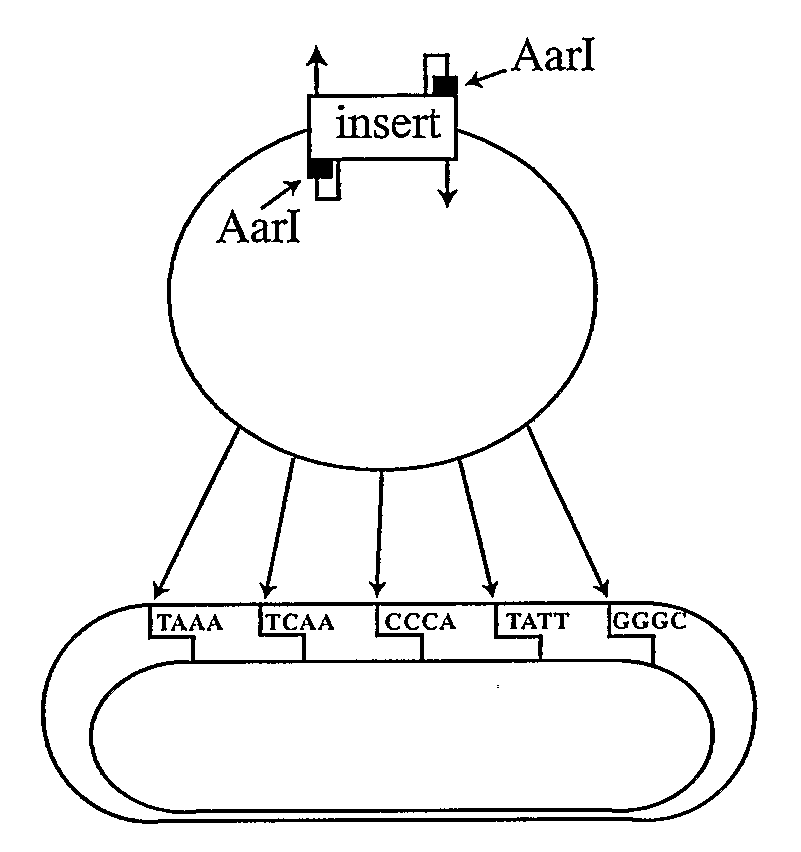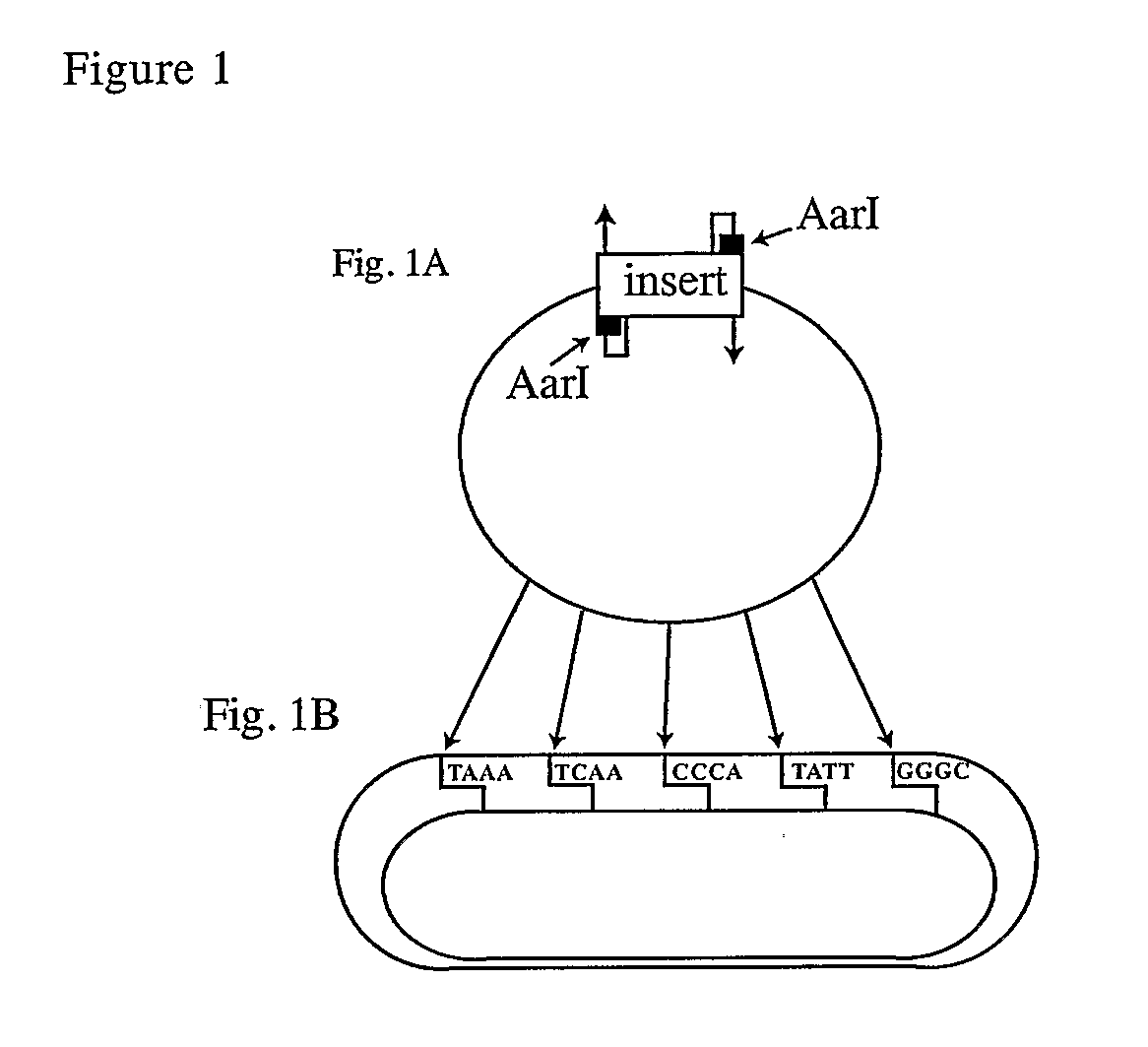Vectors And Methods For Genetic Immunization
a technology of vectors and genetic immunization, applied in the field of vectors and methods for genetic immunization, can solve the problems of reducing the effect of antigen expression, reducing the number of vaccines, so as to improve promote slow cell death enhanced t cell responses and cellular immunity, and enhance the immune response to ha and np.
- Summary
- Abstract
- Description
- Claims
- Application Information
AI Technical Summary
Benefits of technology
Problems solved by technology
Method used
Image
Examples
example 1
Creation of pW2.0
[0184]pWizBang2.0
[0185]In order to facilitate the ordered, directional assembly of genes and vectors, we devised a new vector for a modular approach, in which each DNA fragment is assigned two unique, non-palindromic address tags. This method relies upon the ability of class IIS restriction enzymes to digest at a distance from the enzyme site. Blunt DNA fragments (synthetic dsDNA; PCR amplicons; or blunt restriction fragments) are cloned into a novel vector, PWiz-Bang2.0, and the class IIS enzyme AarI (a seven base cutter commercially available from Fermentas, or an AarI isoschizomer, is used to cleave the DNA, leaving a four base, 5′-overhang. The fragments are recovered and are ligated in a single reaction, producing the desired construct (FIG. 1). In theory, the use of unique, non-palindromic 4-base termini permits up to 121 fragments to be joined unambiguously together.
example 2
Creation of pDNAVACC Vectors Using Gene Self Assembly
[0186]DNA vaccine plasmids were created by single step assembly of six precloned modules using Gene Self Assembly technology. Each modular element was assigned a position in a circular array, providing a choice of promoter, 5-leader / splice-site, target gene or high throughput cloning site, terminators, and prokaryotic ori / selection / sites. Individual modules were assigned a position and directionality by means of 4 bp unique, non-palindromic address tags and cloned into pWiz-Bang2.0. Additional features, such as prokaryotic terminators, were incorporated seamlessly into the modules through 5′ extensions on the PCR primers.
[0187]The (Gene Self Assembly) modules consisted of products representing:
[0188]Bacterial replication origin: High copy number pUC derived replication origin;
[0189]Prokaryotic selectable marker gene (kanamycin; kanR); Eukaryotic enhancer-promoter (CMV or VL30 NVL3; Adams S E, Rathjen P D, Stanway C A et al. 1988 M...
example 3
Validation of pDNAVACC Elements
[0196]pDNAVACC5-EGFP elements were replaced with the corresponding regions from gWiz-GFP (Gene Therapy Systems, San Diego Calif., USA), a derivative of Vical VR1012 vector (Hartikka et al, Supra, 1996), to verify functionality of each pDNAVACC region. Module and fragment swaps were performed using standard PCR and restriction enzyme cloning methodologies, and confirmed by restriction digestion.[0197]i) Enhancer upstream flanking region: replaced XhoI (kanR internal site)-SpeI (CMV enhancer internal site) fragment with XhoI-SpeI fragment[0198]ii) Promoter-Leader-Intron-Kozak: replaced SpeI (CMV enhancer internal site)-NcoI (EGFP start codon) fragment with SpeI-SalI (filled; regenerates SalI site, see below).[0199]a. The EGFP within this clone was replaced with kozak-GFP from g-Wiz-GFP by replacement of the SalI-BglII fragment with SalI-BamHI fragment from gWiz-GFP[0200]iii) Terminator: replaced BglII-StuI fragment with BamHI-XmnI fragment[0201]iv) Origi...
PUM
| Property | Measurement | Unit |
|---|---|---|
| time | aaaaa | aaaaa |
| compositions | aaaaa | aaaaa |
| composition | aaaaa | aaaaa |
Abstract
Description
Claims
Application Information
 Login to View More
Login to View More - R&D
- Intellectual Property
- Life Sciences
- Materials
- Tech Scout
- Unparalleled Data Quality
- Higher Quality Content
- 60% Fewer Hallucinations
Browse by: Latest US Patents, China's latest patents, Technical Efficacy Thesaurus, Application Domain, Technology Topic, Popular Technical Reports.
© 2025 PatSnap. All rights reserved.Legal|Privacy policy|Modern Slavery Act Transparency Statement|Sitemap|About US| Contact US: help@patsnap.com



